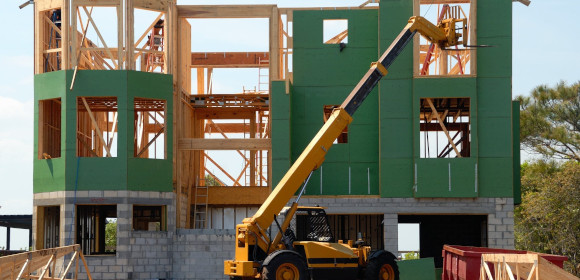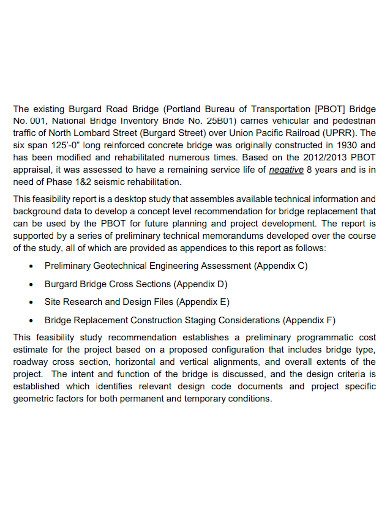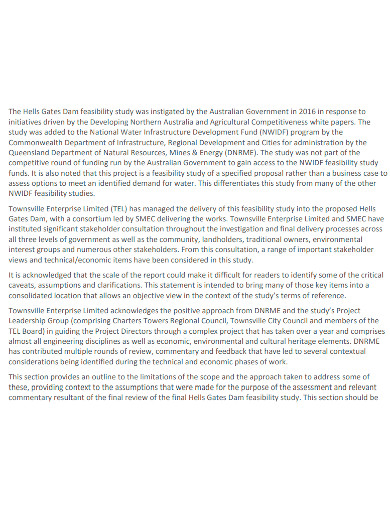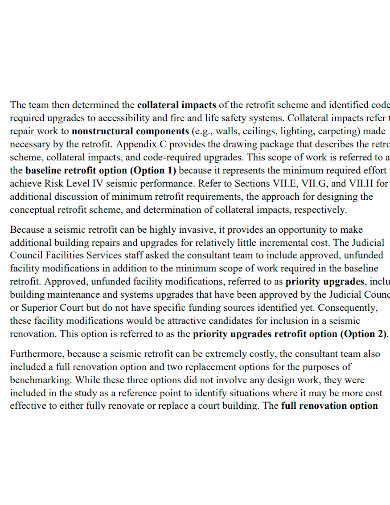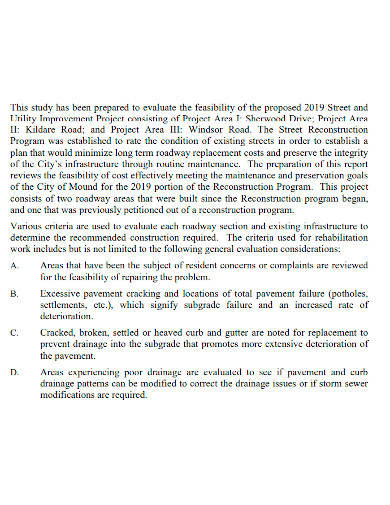In project development, of course project developers such as yourself would not want to see the venture fail. You’ve invested so much time and other valuable resources on this plan and you’re expecting a proper return on investment. Well’ if you are indeed a project developer, and you’re considering a new venture for your company, the best first step to take even before development begins is to write a project feasibility report. Project feasibility reports help you realize whether a project is feasible or not. It examines the project’s intricacies and provide data and information that should dictate if the project will be able to generate enough revenues and achieve your criteria of success.
Drafting a project feasibility report, especially for construction projects, may not be easy for everyone, or anyone for that matter. It requires a lot of data collection, data analysis, and commitment to the task to ensure that your report is factual and unbiased, and that you are presenting the best possible results to your project heads, or any of your general audience. The fate of your project literally lies upon this document, and if the report is poorly written, then you and your company might just dive into a venture blindly without any pre-established knowledge of what might come next. To help you write your construction feasibility report, we have several examples listed below that you can study or use as a guide to ensure that your report is well written and effective.
5+ Construction Feasibility Report Samples
1. Construction Feasibility Report Sample
2. Standard Construction Feasibility Report
3. Printable Construction Feasibility Report
4. Construction Project Feasibility Report
5. Editable Construction Feasibility Report
6. Construction Feasibility Report Format
What Is a Construction Feasibility Report?
A feasibility report is a very essential document that has to be drafted even before the initial stages of the proposed plan. This document essentially asks and answers the question, “Is this feasible?”. It covers significant aspects of the project such as the required resources, technology you might need, your criteria of success, and the projected return on investment. Feasibility reports help identify, explore, and evaluate a project’s feasibility to prevent losing valuable time and resources on a project that’s set to fail. And although there may be projects that are not feasible at all, a feasibility report can also be used to identify possible workarounds or solutions and alternatives that the company can take to still achieve its goals.
Failure of projects may be due to a lot of factors that vary depending on the circumstances so it’s better to be able to isolate them early on. Construction feasibility reports also examine the environment that the project will be exposed to. It’s possible to have some external hindrances that may affect the construction project, or some present factors that could lead to problems in the future. Overall, a well written feasibility report can provide valuable insights regarding the fulfillment and the success of your proposed plan or project.
How to Write a Construction Feasibility Report
Regardless of project type, size, and scope, drafting a feasibility report can be quite challenging. You are dealing with a lot of data collection and analysis, while making sure that your presentation is comprehensible, factual, and unbiased. There are a lot of factors to tackle, both internal and external, to make sure that you have everything you need and more, for the sake of your project. There are also several key steps to keep in mind when writing the document, these key steps will be discussed in more detail below.
- Project description and preliminary analysis
Begin by developing an outline of your project. Give a rough outline of what it is and talk about its purpose, what needs does it fulfill in the community where the project will be implemented. It’s also important to identify the trend of supply and demand early on to establish if the project has a distinct advantage in the market. - Projected Income Statement
This step means moving backwards from the future. Project your overall estimated income from the project itself. After identifying the current trend in the market, you should already have a rough idea of what it is. Also take into account what services you might be needing during development, the cost of these services, and how it should affect the overall development. - Market Survey
This is one of the most important aspects of your feasibility report. Scoping out the market. Doing so should provide you with a much clearer picture of what revenues you can expect from your construction project. Study factors such as demographics, market competitors, geographic influence, market values, and market response. Also determine if your construction project do not cause problems to the environment and if the community is indeed the right place for your project. Review governmental guidelines, both local and federal, and building codes and laws of the state. This is such a crucial step that if you are currently unable to conduct this process due to the lac of resources, it is better to hire an outside company to do it for you. - Propose the best solution
Compare all the data you have gathered from the market analysis to the preliminary analysis and to the criteria of success that you have established. Doing so will filter out what best steps to take and methods to use to ensure the success of your project. After doing so, you should be able to see the feasibility of your construction project right about now. After all that, use your knowledge and expertise in the field to present the best solution you have come to in the most convincing way possible. Make sure that whoever the reader of your report might be, realize that this is the best possible option to take to ensure overall success. Convince them that taking this solution preserves the optimal resource distribution of the company, while still able to gain the most benefit possible. - Review and conclusion
After the market survey, this is the second most important component of your feasibility report. To be able to conclude your report properly, make sure to take some time to review and re-analyze your work. Making sure that there are no loose ends and other aspects that needs tweaking or adjustments. When writing your conclusion, re-summarize the purpose of your project and its goals, and re-state the best possible solution to take.
FAQs
Why is feasibility study important for business?
Feasibility studies are important because it allows businesses to address where and how it can effectively operate. It also helps identify potential obstacles that may pose a hindrance to the operations, and identify the funding it will need to ensure good and successful business.
What are the five types of feasibility study?
Technical Feasibility. Economic Feasibility. Legal Feasibility. Operational Feasibility. Scheduling Feasibility.
What type of feasibility study is more important?
Among the five types of feasibility studies, Economic Feasibility is most important and Legal Feasibility is less considered.
Feasibility reports are important for any project of any shape, from, and scale. And with the information we’ve provided, along with the samples and templates, you should be more than equipped to write an effective and unbiased construction feasibility report.
Related Posts
FREE 21+ Sample Project Reports
FREE 19+ Cost Benefit Analysis Templates
FREE 16+ Weekly Report Samples
FREE 14+ Sample Project Status Reports
FREE 9+ Daily Report Samples
FREE 8+ Sample Site Survey Templates
FREE 7+ Sample Forensic Report Templates
FREE 5+ Sample Bid Proposal Letters
FREE How to Write a Visit Reports
FREE 63+ Incident Report Examples
FREE 50+ Sample Reports
FREE 15+ Sample Construction Project Proposals
FREE 11+ Sample Action Reports
FREE 10+ Report Worksheet Samples
FREE 8+ Sample Technical Analysis Templates
